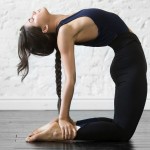TamarSamirYoga is your online yoga studio with which you can practice yoga at home around the clock. Find yoga videos, exercise programs, and articles.
YogaEasy.de-Grande Dame and Hatha Yoga mastermind Anna Trökes about allergies and pranayama: Everything about alternating breathing, buzzing, and Kapalabhati and the most important information about your damaged nervous system.
Allergies are increasing
We now know that allergic diseases have increased considerably in the last few decades. On the one hand, this may be due to the fact that the air pollution with fine dust has increased dramatically in some cases. But it certainly has - perhaps mainly - to do with the fact that more and more people are suffering from chronic stress. Overstimulation, multitasking, increasing acceleration and haste, a fast pace that causes us all to chase after ourselves over and over again weakens our immune system in the long term. And that is responsible for keeping in check the external factors such as dust, pollen, electrosmog, etc.
Stress increases allergies
Everything that stresses us triggers a neuro-endocrinological response in our body. First, our nervous system reacts to the stressor. The sympathetic branch of the autonomic nervous system is activated (= neuro) and causes a hormonal reaction (= endocrinological) at lightning speed. In the course of such a stress reaction, our immune system is largely deactivated. If the stress doesn't stop and we can't recover enough from it, then our immune systems are weakened. It only begins to fully take over its tasks again when we come to rest.
As soon as our autonomic nervous system notices that calm is returning, it deactivates the sympathetic nervous system and activates its antagonist, the parasympathetic nervous system. Under the influence of this branch of our vegetative body, recovery, repair, and healing become possible.
Pranayama for allergies
The methods of yoga give us the opportunity to specifically activate our parasympathetic system. The easiest and most direct way to do this is through the breath.
Every inhalation causes a very subtle activation of the sympathetic nervous system, a slight increase in blood pressure and heart rate.
Each exhalation, on the other hand, causes a very subtle activation of the parasympathetic nervous system, a slight decrease in blood pressure and heart rate.
This means that any asana practice or breathing technique that encourages exhalation will automatically tune in parasympathetically.
It is enough to breathe in softly and naturally and hum with every exhalation, to sound OM or to use a vowel, ideally "S", "SCH", "F" or "W". If you know ujjayi - breathing with the fricative sound - you could also breathe in gently and exhale for a while with quiet, fine ujjayi.
Ujjayi breathing in inhalation and exhalation also has an effect on the parasympathetic nervous system, through the quiet (!), Steady noise of the breath.
Alternating breathing
Another pranayama has a reputation for providing very good and lasting relief for allergies such as hay fever, namely alternating breathing. Why this so has not yet been investigated in detail. I suspect that the main healing effect is related to the fact that alternating breathing (Nadi Shodhana Pranayama), just like Ujjayi or the accentuation of exhalation, enables a vegetative balance to be restored.
Kapalabhati
Finally, we would like to point out Kapalabhati (»skull lights«). This is a type of breathing that in yoga - depending on the tradition - is assigned to both the purification exercises and the pranayamas. With Kapalabhati we exhale quickly and actively over a longer period of time (similar to blowing our nose). This causes turbulence in the air that you breathe, which helps ventilate and cleanse the sinuses. At the same time, the mucous membranes are better supplied with blood.
Helpful in case of allergies: nasal rinse
Another hatha yoga exercise helps relieve symptoms of hay fever, namely nasal irrigation (jala neti). Saltwater is flushed through the nasal passages with a special beaked jug, the neti jug. This cleanses, strengthens the blood circulation, and hardens if we alternately rinse hot and cold.







